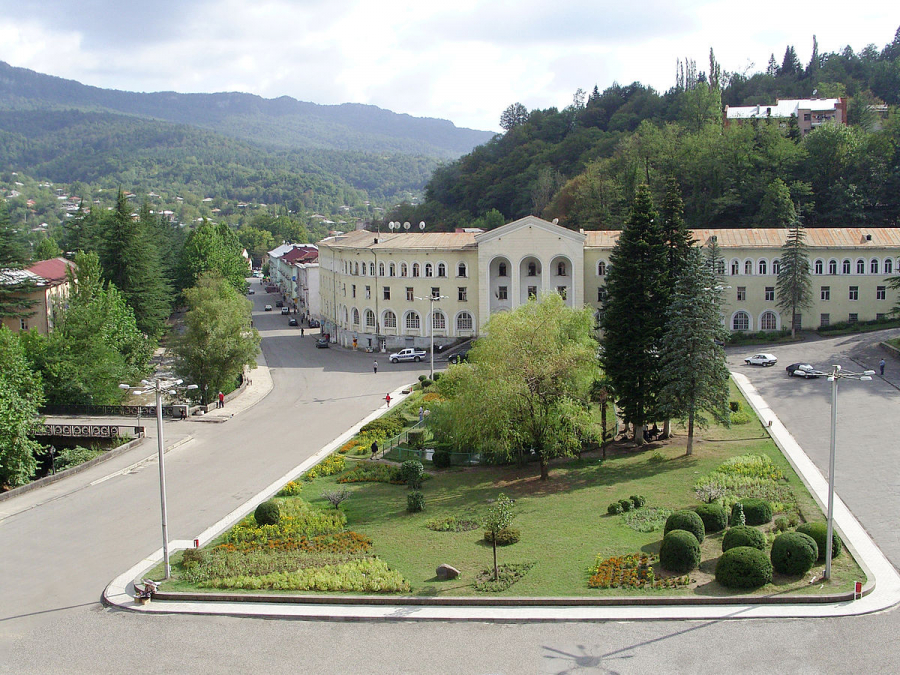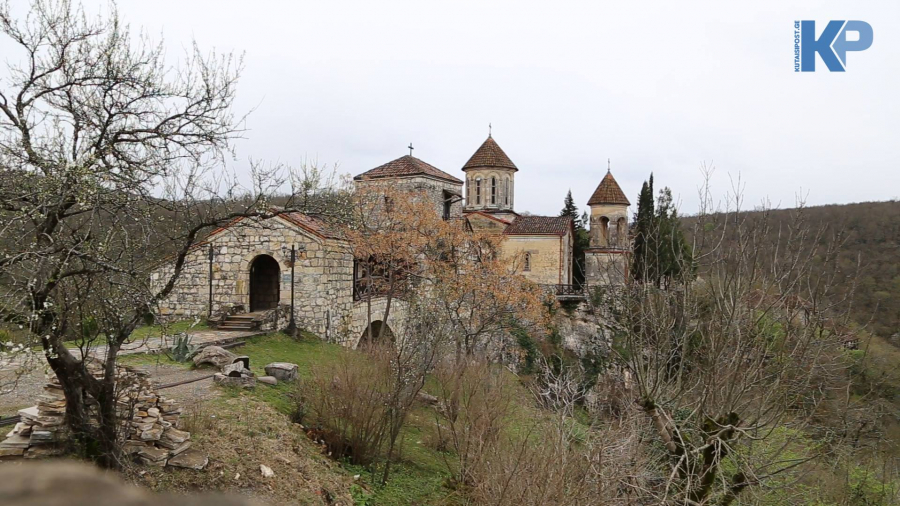Region : Imereti
Municipality : Tkibuli
Tkibuli Region, which means ancient Okriba, is nearly 600-800 meters above sea level in western Georgia, Imereti. The town is built on the both banks of the river Tkibula ( which is a right tributary of the Kvirila ) and is surrounded with hilly forests.
Ambrolauri municipality borders Tkibuli on the North, Chiatura --on the South-East, Kutaisi is on the South –West and Tskaltubo borders the region on the West .The length of boundaries is 120 km long and the whole area covers 470 square kilometres.
The population of the town is 14000 people, while the village inhabitants are 17000.
The main product of agriculture is maize. Viticulture is well developed as well as tea production. Some of important fields of agriculture are stockbreeding , bee-keeping and fruit-growing.The main industry of Tkibuli remains coal mining .The first deposit of this stone was discovered in 1825 and since 1846 it has been processing and exploiting.The term of “ Okriba” first was mentioned in compilations of Nikortsminda Church dated back to 1071.The town name ‘’Tkibuli “is dated to 1259-1293 in the historical source written by Gelati Church deacon Jacob as a sacrifice for Mother of God.
Okriba is famous for its historical monuments. They attract visitors by their mosaic, paintings , fresco and lapidary inscriptions.
Among maintained historical monuments The Gelati – the Monasterial Complex - is the most important one. It is included in UNESCo’s World Heritage Site list together with the Bagrati Cathedral. Besides those two monuments on the territory of Okriba there are the Motsameta monastery and The Nakalakari. Tsutskhvati, djvarisa and Satsire castles are also represented as monuments of old times.
Tkibuli municipality can offer visitors numerous castles and churches of ancient times: Crist’s church of the 10th -11th century in Kursebi, the fortress “sheupovari” of early medieval times in Mukhura, ST George’s church whit frescoes of the 11th -12th centuries in Kisoreti.In the village of Dzirovni there is the fortress of late medieval times and archangel church of the 10th and 11th centuries with relief –work depiction of St George .Archangel church of the 12th century in Bueti, bas –relief style .St George’s church of the 10th century in the village of Djonia with lapidary inscriptions. Mtasakdrisi church of the 10th century in the village of Dzmuisi, St George’s church of nine crosses ,which is 1570 meters above sea level , keeps only parts of the walls, and finally, the Tsutskhvati fortress of late medieval times .
One of the wonders of nature in tkibuli region is the cave in Tsutskhvati, which consists of 13 floors, on several floors stalagmites and stalactites are represented. Among caves “warm caves “ are in majority. They were used by primeval societies. This unique cave used to be the place for cultish events that has no analogue throughout the history. Some archeological monuments are found in the cave from the palaeolithic period to the Bronze Age and The Historic Era . Approximately 40 different animal bones have been discovered in this cave too.
In Tkibuli apart from The Gelati and Motsameta monasterial sets The tsutskhvati Cave ( which has been announced as a natural preserve since 1974) can easily become one of the most important tourist attractions together with The Nine Cross. Tkibuli and Shaori water reservoirs can serve tourists as a recreation places.

Motsameta Monastery Complex (Video)
Show at map
Category : sightseeings

Motsameta Monastery Complex is located in 6km. from Kutaisi in the valley of river Tskaltsitela and 15 minutes from the city centre is enough to reach it.
Besides the architectural sightseeing of the monastery, visitors will be amazed with a magnificent nature and river where the red water flows.
The name of the monastery comes from the Georgian word "martyred" and is related to the brothers David and Konstantine. In the 8th century, last Arab Khalifa Marwan II (the "deaf") demanded the brother to change their faith, but the noblemen did not agree and they were tortured. after this event, on the name of these brothers a church was built in the Tskaltsitela valley and their corpses are still kept in the church.
Here thepilgrims perform a certain ritual and they believe that if they pass in the cave under the corpses of David and Konstantine, their wishes will come true.
The Motsameta Monastery Complex is surrounded with a beautiful valley where the river Tskaltsitela flows. The river was named so because of the red rocks in it and that is why the water in the river is reddish.
